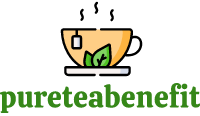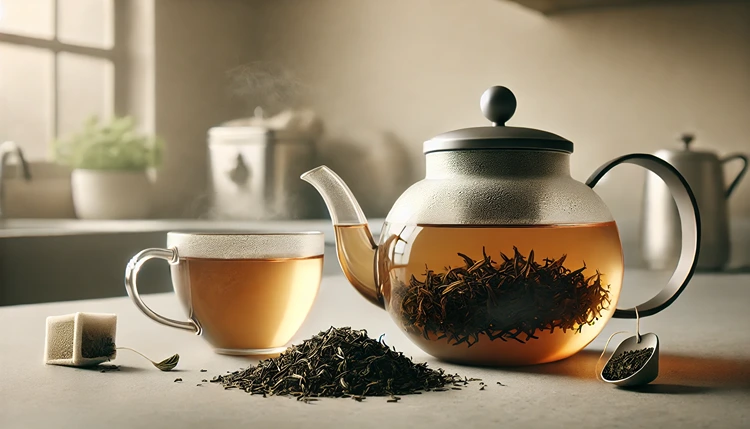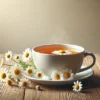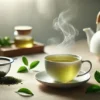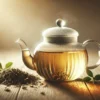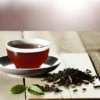Ever wondered if loose leaf tea really tastes better than tea bags, or if it’s all just hype? You’re not alone! Many tea lovers often debate whether the brewing method affects the flavor, aroma, and overall experience. Today, we’re diving deep into the world of loose leaf tea and tea bags to find out which one reigns supreme in terms of taste and enjoyment.
What’s the Difference Between Loose Leaf Tea and Tea Bags?
Before we get into the nitty-gritty of taste, let’s talk about the core difference between these two brewing methods. It’s important to understand that loose leaf tea and tea bags aren’t just about convenience or tradition—they represent a fundamental difference in how tea is processed and consumed.
Loose Leaf Tea Explained
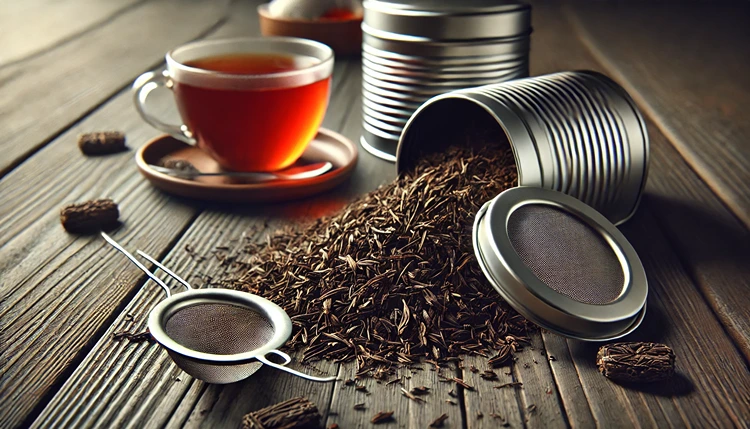
Loose leaf tea is made up of whole or large pieces of tea leaves. These leaves are typically more intact, allowing them to expand fully during the brewing process. When brewed, the tea leaves release their essential oils and aromas, which contribute to a richer and more complex flavor. Because of their size and quality, loose leaf teas often contain a wider range of flavors, making them popular among tea enthusiasts.
Tea Bags: A Convenient Alternative
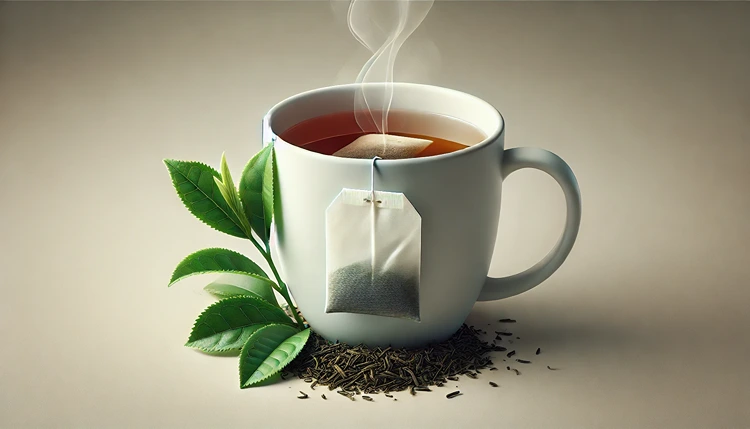
On the other hand, tea bags are small, pre-measured pouches filled with finely broken tea leaves or “fannings” and “dust.” While convenient, the smaller particles inside tea bags lose much of their essential oils and aromas, resulting in a less nuanced flavor profile. Tea bags are undeniably more convenient and quicker to use, but they often compromise taste in favor of ease and speed.
Which Brewing Method Affects Taste More?
The short answer? Both methods impact flavor in unique ways. However, loose leaf tea tends to deliver a more authentic, fuller-bodied taste, while tea bags provide a faster, simpler brew that’s typically milder in flavor.
How Does Loose Leaf Tea Taste?
Because loose leaf tea is larger and less processed, it generally retains more of its natural oils and complex flavors. When brewed, the tea leaves expand, allowing for a slower, more even release of the tea’s essential oils and subtle flavors. This results in a cup that’s aromatic, rich, and full of nuance—exactly what many tea drinkers crave.
Helpful Hint:
When brewing loose leaf tea, always give the leaves enough room to expand fully. Using a large infuser or a teapot with plenty of space will ensure that you get the most flavor out of your tea.
What About Tea Bags?
Tea bags are often filled with smaller particles, which means that while they may brew faster, they don’t offer the same depth of flavor as loose leaf tea. Since the tea inside is more finely ground, it releases its flavors quickly but often lacks the complexity and richness of loose leaf. This doesn’t mean tea bags are bad—some people prefer their simplicity and speed, especially when they’re short on time.
Convenience vs. Quality: Does It Impact Taste?
It’s hard to ignore the convenience factor when it comes to tea bags. In just a minute or two, you can have a hot cup of tea without any fuss. However, convenience often comes at the cost of quality. Loose leaf tea may take a bit more effort to prepare—measuring out the right amount, waiting a little longer for it to steep—but the payoff is a far more flavorful and enjoyable experience.
Is Loose Leaf Always Better?
Not necessarily. While loose leaf tea does tend to have a superior flavor, it’s not always practical. For busy mornings, travel, or work, tea bags are often the preferred option due to their speed and convenience. If you’re just after a quick cup, the subtlety of loose leaf tea may not be worth the extra effort. It all comes down to what you’re looking for in your tea experience.
Which One is Healthier?
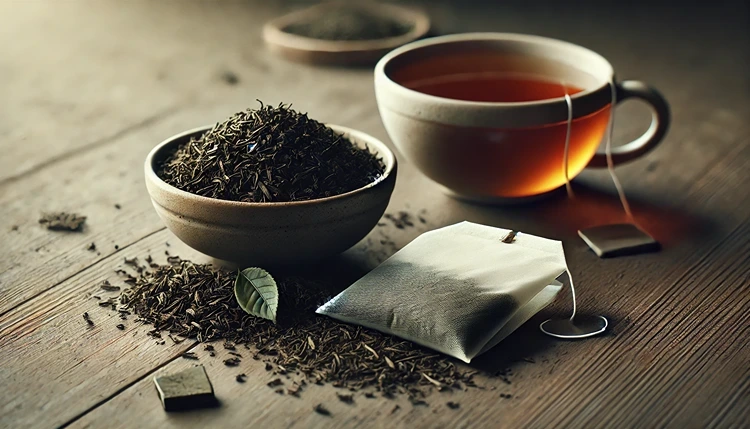
When it comes to health benefits, both loose leaf tea and tea bags offer similar nutritional value, as long as you’re choosing high-quality, organic options. However, some low-quality tea bags might contain microplastics or bleach, which can leach into your tea when brewing. Loose leaf tea generally avoids these issues because it doesn’t require a bag, allowing you to enjoy your tea without any potential contaminants.
Loose Leaf Tea: More Antioxidants?
Loose leaf tea, with its larger leaves and slower brewing process, tends to retain more antioxidants compared to the smaller, broken-down leaves in tea bags. This means that you could be getting more health benefits, like improved digestion or a boost in energy, from your cup of loose leaf tea.
Tea Bags and Additives
Many tea bags, especially mass-produced ones, can contain artificial flavors, preservatives, or other additives. These ingredients may affect the overall flavor and even reduce some of the natural health benefits of tea. Always check the label when purchasing tea bags to ensure you’re getting a high-quality, natural product.
How Does Brewing Time Affect Flavor in Loose Leaf vs Tea Bags?
One of the key factors in determining the taste of your tea is how long you let it brew. Both loose leaf tea and tea bags are affected by brewing time, but the results can be quite different. Understanding the ideal brewing time for each method can help you get the best flavor from your tea.
Loose Leaf Tea: Slower, More Even Extraction
Loose leaf tea typically requires a longer brewing time than tea bags. Because the tea leaves are larger and less broken down, they need more time to release their flavors. A longer steep allows the leaves to fully unfurl and infuse the water with a more complex and layered taste. Generally, loose leaf tea is steeped for 3 to 5 minutes, depending on the type of tea.
This slower brewing process can be a positive, as it allows for a more controlled extraction. You’ll notice that loose leaf tea rarely gets bitter when steeped for the right amount of time. In fact, it tends to have a more well-rounded flavor because the essential oils and tannins are released gradually, rather than all at once.
Tea Bags: Faster, but Prone to Bitterness
Tea bags, on the other hand, tend to brew much faster. Because the tea leaves are more finely chopped, they release their flavors more quickly. While this can be convenient if you’re in a hurry, it also means that the tea can easily become over-brewed and bitter if left in the water for too long. Most tea bags need only 2 to 3 minutes of steeping time to reach their optimal flavor.
However, be careful with tea bags. Since they release tannins more rapidly, it’s easy to end up with a bitter, astringent cup of tea if you leave them in the water for too long. For the best flavor, always remove the tea bag after the recommended steeping time.
What About Price? Does It Affect Taste?
Price can also play a role in the taste of your tea. As you might expect, loose leaf tea tends to be more expensive than tea bags, but does that mean it always tastes better? Not necessarily. The cost difference between the two often comes down to the quality of the leaves used, packaging, and brand reputation, rather than a direct correlation with flavor.
Loose Leaf Tea: Higher Quality, Higher Price
Loose leaf tea is often more expensive because it typically uses whole tea leaves, which are more labor-intensive to harvest and process. This usually means that loose leaf tea is of higher quality, and as a result, offers a better taste. If you’re someone who values quality and doesn’t mind paying a little extra for a premium product, loose leaf tea is a great choice.
Tea Bags: Affordable, but Sometimes Lower Quality
Tea bags, especially those found in the grocery store, are often more affordable because they use smaller tea leaves or tea dust. While this lowers the price, it can also lower the flavor quality. That said, there are many high-quality tea bags available today, particularly in the form of pyramid bags, which allow for larger tea leaves to be used. These can offer a great balance between price and flavor.
- Loose leaf tea: Usually higher quality, but more expensive.
- Tea bags: More affordable, but can vary widely in quality.
Does the Type of Tea Matter?
It’s important to note that the type of tea you’re brewing can greatly influence whether loose leaf or tea bags provide the better flavor. For some types of tea, the difference in taste is more pronounced than others. Let’s break it down by tea type:
Green Tea: Loose Leaf vs Tea Bags
Green tea is one of the most sensitive types of tea when it comes to flavor. Loose leaf green tea is often fresher and more vibrant because the whole leaves allow for a slower release of tannins and a more controlled brewing process. Tea bags, on the other hand, tend to produce a more bitter flavor due to the faster extraction of tannins from the finely chopped leaves.
Black Tea: Loose Leaf vs Tea Bags
Black tea is a bit more forgiving when brewed with tea bags. While loose leaf black tea still offers a fuller, richer flavor, tea bags can produce a fairly decent cup without too much bitterness, especially if you stick to the recommended steeping time. However, you’ll still notice that loose leaf black tea has more depth and complexity in its flavor.
Herbal Tea: Loose Leaf vs Tea Bags
Herbal teas are another category where loose leaf can shine. Many herbal teas contain a variety of flowers, herbs, and spices that are best enjoyed when the ingredients are left in larger pieces. Loose leaf herbal teas often have a more balanced and flavorful taste, while tea bags might lack the same level of intensity.
Storage: Does It Affect Flavor Over Time?
Believe it or not, how you store your tea can greatly impact its taste over time. Both loose leaf tea and tea bags are sensitive to air, light, and moisture, which can cause the tea to lose its flavor and freshness. But which one holds up better when stored for long periods?
Storing Loose Leaf Tea
Loose leaf tea needs to be stored properly to maintain its flavor. Because the leaves are larger and more delicate, they can easily lose their freshness if exposed to air or light for too long. For the best results, store loose leaf tea in an airtight container, away from direct sunlight and humidity. When stored correctly, loose leaf tea can maintain its flavor for up to a year, depending on the type of tea.
Helpful Hint:
To keep your loose leaf tea as fresh as possible, avoid storing it near strong-smelling foods or spices. Tea leaves can absorb odors, which may affect the taste of your brew.
Storing Tea Bags
Tea bags are a bit more convenient when it comes to storage. Since the tea is already portioned and sealed, they are less likely to lose flavor as quickly as loose leaf tea if left in their original packaging. However, just like loose leaf tea, tea bags should be stored in a cool, dry place, away from strong odors and light. While they have a slightly longer shelf life than loose leaf tea, tea bags will still lose flavor over time, especially if they’re not stored in a sealed container.
Overall, both loose leaf tea and tea bags require proper storage to maintain their flavor. But if you’re planning to store tea for a long period, loose leaf tea is likely to retain more of its original taste, provided it’s stored correctly.
Which Brewing Method is Best for You?
At the end of the day, choosing between loose leaf tea and tea bags comes down to personal preference and your tea-drinking habits. If you’re someone who enjoys the process of brewing tea and values a richer, more complex flavor, loose leaf tea is likely your best bet. However, if you’re often short on time or just want a quick, easy cup, tea bags can be a great option.
Environmental Impact: Loose Leaf vs Tea Bags
When we talk about tea, we often focus on flavor and convenience, but there’s another important factor to consider: the environmental impact. With more people becoming environmentally conscious, it’s worth comparing how loose leaf tea and tea bags stack up in terms of sustainability and waste.
Loose Leaf Tea
Loose leaf tea is generally considered to be the more environmentally friendly choice. Since it doesn’t require the use of individual packaging like tea bags, there’s significantly less waste involved. Most loose leaf teas are sold in bulk or in recyclable containers, and you can control how much you brew without excess packaging. Additionally, the tea leaves themselves are fully compostable, making loose leaf tea a zero-waste option if you manage the disposal of your used tea leaves properly.
Tea Bags
While tea bags offer a quick and easy way to brew tea, they come with a heavier environmental footprint. Many conventional tea bags are made with plastic, which means they aren’t fully biodegradable. Even the paper tea bags sometimes use plastic fibers to seal the bags, making them less eco-friendly. This plastic can take hundreds of years to break down, contributing to landfill waste.
However, some companies are now producing plastic-free tea bags, using compostable materials instead. If you prefer tea bags for convenience, it’s a good idea to look for brands that offer biodegradable options.
Helpful Hint:
If you’re looking for an eco-friendly way to enjoy tea, loose leaf tea is often the best option. But if you prefer tea bags, opt for brands that use biodegradable materials to reduce your environmental footprint.
How to Make the Best of Both Worlds
Sometimes, you want the rich, full flavor of loose leaf tea but don’t have the time for a long brewing process. Or maybe you prefer the convenience of tea bags but want to elevate the flavor. Luckily, there are a few ways to bridge the gap between the two brewing methods.
Using Pyramid Tea Bags for a Better Brew
If you prefer the convenience of tea bags but want a better taste, try switching to pyramid tea bags. These larger, more spacious bags allow the tea leaves to expand more fully, mimicking the experience of loose leaf tea. Pyramid tea bags often contain whole tea leaves, which leads to a richer and more flavorful cup compared to standard tea bags filled with tea dust or fannings.
Invest in a Loose Leaf Tea Infuser
If you’re someone who’s hesitant to try loose leaf tea because of the extra steps involved, consider investing in a simple tea infuser. These small, reusable devices allow you to brew loose leaf tea with the same ease as using a tea bag. With a tea infuser, you can measure out the exact amount of tea you want, place it directly in your cup or teapot, and enjoy the enhanced flavor of loose leaf tea without any hassle.
Try a Hybrid Approach
There’s no rule that says you have to stick exclusively to one method. Many tea enthusiasts enjoy both loose leaf tea and tea bags, depending on the situation. For example, you might choose loose leaf tea for a leisurely afternoon tea session, but keep tea bags on hand for a quick brew during busy mornings. Experiment with both methods and find what works best for you.
Pros and Cons of Loose Leaf Tea vs Tea Bags
This section fits perfectly within the article, as it helps readers easily compare the two brewing methods in a clear, concise way. Insert this section right after the paragraph on “Which Brewing Method is Best for You?”
Pros of Loose Leaf Tea
- Richer, more complex flavor profile.
- Can be reused for multiple steeps, making it more economical in the long run.
- Less processed, resulting in higher quality and more natural antioxidants.
- Environmentally friendly—no waste from tea bags or packaging.
- More control over the strength and flavor of the tea.
Cons of Loose Leaf Tea
- Requires more effort and time to brew.
- Requires additional tools like a tea infuser or teapot.
- Can be more expensive upfront compared to tea bags.
Pros of Tea Bags
- Quick and convenient for on-the-go brewing.
- More affordable, especially for casual tea drinkers.
- Easy portion control—no need to measure out leaves.
- Minimal cleanup compared to loose leaf tea.
- Variety of options readily available in supermarkets.
Cons of Tea Bags
- Generally offers a weaker, less complex flavor.
- Many tea bags contain microplastics or are not biodegradable.
- Smaller, broken tea leaves lead to faster oxidation and staleness.
- Can become bitter if steeped too long.
Comparison of Loose Leaf Tea vs Tea Bags
| Aspect | Loose Leaf Tea | Tea Bags |
|---|---|---|
| Flavor | Richer, more complex due to larger leaves | Milder, often less nuanced |
| Brewing Time | 3-5 minutes, depending on type | 2-3 minutes |
| Convenience | Requires more effort, tools needed (infuser, teapot) | Quick and easy, no additional tools required |
| Environmental Impact | Less waste, compostable tea leaves | Can contain plastic; not always biodegradable |
| Price | Generally higher due to quality | More affordable, especially for basic tea bags |
| Health Benefits | Retains more antioxidants, less processed | Varies by quality; generally fewer antioxidants |
FAQs
Wrapping Up
When it comes to the question of “Loose leaf tea vs tea bags: which tastes better,” the answer ultimately depends on what you prioritize in your tea-drinking experience. Loose leaf tea offers a richer, more complex flavor and the potential for multiple steeps, but it requires more effort to brew. On the other hand, tea bags are convenient and quick, making them ideal for busy days or when you’re on the go.
Both options have their merits, and there’s no definitive right or wrong choice—just the one that best suits your needs. If you’re after full-bodied flavors and enjoy the ritual of brewing tea, loose leaf tea is probably your best bet. But if speed and simplicity are more important to you, high-quality tea bags can still provide a satisfying cup.
